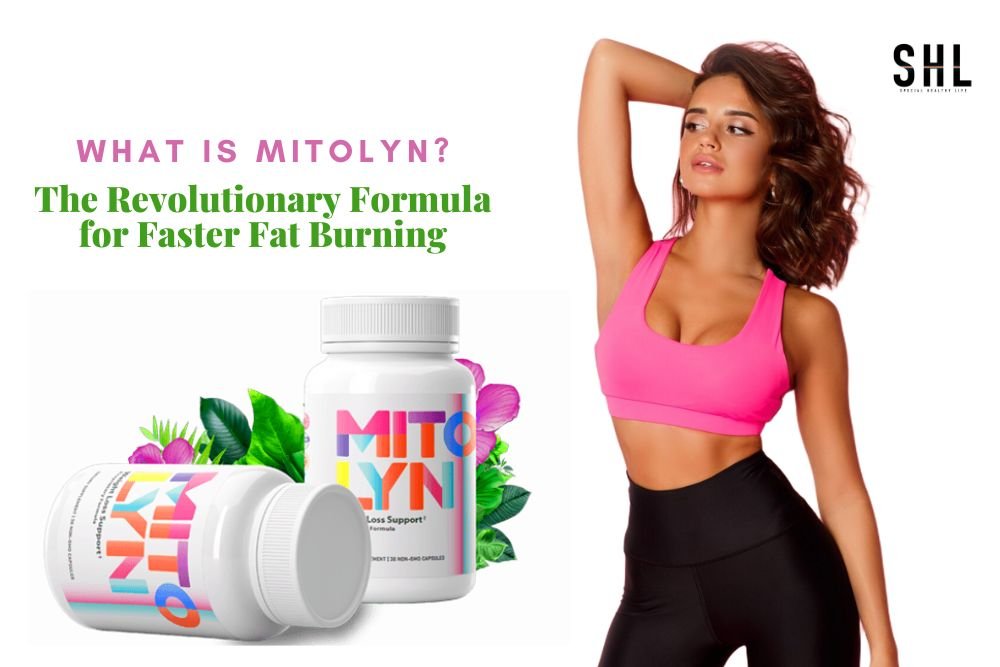Discover effective methods for belly fat removal without surgery and achieve a slimmer, healthier body. In today’s health-conscious world, many people are seeking effective ways to achieve a slimmer and healthier physique. One common area of concern is belly fat, which can be stubborn and challenging to get rid of.
While surgical methods have been popular for decades, advances in medical technology and research have brought about alternative and non-invasive approaches to belly fat removal. In this article, we will explore various methods to eliminate belly fat, focusing on both non-surgical and surgical options.

Understanding Belly Fat and Its Health Implications
What Is Belly Fat?
Belly fat, also known as visceral fat, is the fat stored around the abdominal cavity and internal organs. Unlike subcutaneous fat (found just beneath the skin), visceral fat poses more significant health risks as it surrounds vital organs such as the liver, pancreas, and intestines.
Types of Belly Fat
There are two main types of belly fat – subcutaneous and visceral fat. Subcutaneous fat lies just below the skin and is relatively harmless, while visceral fat is the more dangerous type that contributes to various health issues.
Health Risks of Excess Belly Fat
Excess belly fat has been linked to an increased risk of several health conditions, including cardiovascular disease, type 2 diabetes, high blood pressure, and certain cancers. Therefore, it is essential to address belly fat to maintain overall health.
Natural Approaches to Belly Fat Removal Without Surgery
Taking a natural and holistic approach to belly fat removal is often the first step in the journey towards a healthier lifestyle. Here are some effective natural methods:
Balanced Diet and Portion Control
A balanced diet that includes a variety of nutrients, such as lean proteins, whole grains, fruits, and vegetables, is crucial for managing belly fat. Portion control also helps prevent overeating and contributes to weight loss.
Regular Exercise and Physical Activity
Incorporating regular exercise into your routine is vital for burning calories and reducing belly fat. Cardiovascular exercises, strength training, and core-strengthening workouts can all be effective in targeting abdominal fat.
Stress Management and Sleep
High levels of stress can lead to weight gain and increased belly fat. Engaging in stress-reducing activities like meditation, yoga, or spending time in nature can be beneficial. Additionally, ensuring an adequate amount of sleep each night helps regulate hormones related to hunger and weight.
Herbal Remedies and Supplements
Certain herbs and natural supplements, like green tea extract or apple cider vinegar, have been suggested to aid in weight loss and belly fat reduction. However, it’s essential to consult with a healthcare professional before incorporating any supplements into your routine.
Intermittent Fasting
Intermittent fasting involves cycling between periods of eating and fasting. This approach can help with weight loss and may assist in reducing belly fat when done correctly and under proper supervision.
Non-Surgical Procedures for Belly Fat Reduction

For individuals looking for non-invasive methods to target stubborn belly fat, several cosmetic procedures are available:
Cryolipolysis (CoolSculpting)
Cryolipolysis, commonly known as CoolSculpting, is a non-surgical fat reduction procedure. It uses controlled cooling to freeze and destroy fat cells, which are then naturally eliminated from the body over time.
Radiofrequency Lipolysis (RF)
Radiofrequency lipolysis is a non-surgical procedure that utilizes radiofrequency energy to heat and break down fat cells. This process encourages collagen production and tightens the skin in the treated area.
Laser Lipolysis (Liposuction)
Laser lipolysis, often referred to as laser liposuction, is a minimally invasive procedure that uses laser energy to liquefy fat cells. The liquified fat is then removed through a small cannula, resulting in targeted fat reduction.
Surgical Options for Belly Fat Removal
For individuals seeking more immediate and dramatic results, surgical procedures can provide lasting solutions:
Liposuction
Liposuction is a surgical procedure that suctions out excess fat from specific areas of the body, including the abdomen. It is an effective way to remove larger volumes of fat and contour the abdominal area.
Tummy Tuck (Abdominoplasty)
A tummy tuck, or abdominoplasty, is a surgical procedure that not only removes excess fat but also tightens the abdominal muscles and removes sagging skin. It is an ideal option for those with significant excess skin and muscle laxity.
Post-Treatment Care and Maintenance
Regardless of the method chosen, post-treatment care is crucial for optimal results:
After non-surgical procedures, it’s essential to follow any specific instructions provided by the practitioner. Maintaining a healthy lifestyle through diet and exercise will help maintain the results.
For surgical procedures, proper aftercare is vital to ensure proper healing and minimize complications. Patients must adhere to their surgeon’s guidelines for a safe and successful recovery.
Understanding Probiotics and Their Impact on Belly Fat
In the quest for a trimmer waistline and a healthier body, many individuals are turning to non-surgical methods of belly fat removal. Among these approaches, the use of probiotics and innovative herbal extracts like GreenSelect Phytosome has gained popularity due to their potential to support weight management and promote fat loss.
Probiotics are live microorganisms that provide health benefits when consumed in adequate amounts. These “good bacteria” are commonly known for their positive effects on gut health, but emerging research suggests that specific strains of probiotics may play a role in weight management as well.

Lactobacillus gasseri
Lactobacillus gasseri is a strain of probiotic bacteria naturally found in the digestive tract. Studies have shown that supplementing with L. gasseri may help reduce belly fat and overall body weight. One mechanism behind this effect is its ability to inhibit the expression of genes involved in fat storage, leading to decreased fat accumulation in the abdominal region.
Additionally, L. gasseri is believed to influence the production of hormones that regulate appetite and satiety, potentially reducing overeating and promoting better food choices.
Lactobacillus rhamnosus
Another probiotic strain that has garnered attention for its potential weight management benefits is Lactobacillus rhamnosus. Like L. gasseri, L. rhamnosus may aid in reducing belly fat by modulating the expression of genes related to fat metabolism.
Moreover, this probiotic has been linked to improved insulin sensitivity and reduced inflammation, both of which are critical factors in maintaining a healthy weight and reducing visceral fat.
Lactobacillus fermentum
Lactobacillus fermentum is yet another probiotic strain that may contribute to belly fat reduction. Research suggests that L. fermentum helps regulate lipid metabolism, resulting in decreased fat absorption and storage.
Additionally, this probiotic may support a balanced gut microbiome, which plays a crucial role in overall health and weight management.
The Power of GreenSelect Phytosome in Belly Fat Removal

In combination with these probiotic strains, the inclusion of GreenSelect Phytosome further enhances the potential for belly fat removal.
GreenSelect Phytosome is a patented extract derived from green tea (Camellia sinensis) leaves. It contains a high concentration of catechins, particularly epigallocatechin gallate (EGCG), which is known for its powerful antioxidant and thermogenic properties.
Fat Metabolism and Weight Management
GreenSelect Phytosome has been extensively studied for its impact on fat metabolism and weight management. EGCG has been found to increase the body’s energy expenditure, resulting in a higher calorie-burning rate and improved fat utilization.
Reducing Fat Absorption
Furthermore, GreenSelect Phytosome has been shown to inhibit the activity of certain digestive enzymes, which are responsible for breaking down dietary fats. By inhibiting these enzymes, the extract may reduce the absorption of dietary fats, leading to a decrease in overall fat accumulation.
Synergistic Action for Belly Fat Removal
When combined, the probiotic strains Lactobacillus gasseri, Lactobacillus rhamnosus, and Lactobacillus fermentum, along with GreenSelect Phytosome, can work synergistically to support belly fat removal without surgery.
Improved Gut Health
First and foremost, these probiotics promote a healthy gut environment by restoring the balance of beneficial bacteria. A well-balanced gut microbiome contributes to efficient digestion and nutrient absorption, reducing the likelihood of fat storage in the abdominal area.
Appetite Regulation
The probiotics L. gasseri and L. rhamnosus may help regulate appetite and reduce cravings for unhealthy foods. By curbing excessive calorie intake, they support the overall weight management process.
Fat Metabolism
The probiotic L. fermentum, in combination with GreenSelect Phytosome, aids in fat metabolism and utilization. This combination encourages the body to burn stored fat for energy, including fat stored around the belly.
Conclusion
Belly fat removal without surgery is achievable through various natural methods and non-surgical procedures. By adopting a balanced diet, regular exercise, and stress management techniques, individuals can begin their journey to a healthier body.
For those seeking quicker and more dramatic results, non-surgical treatments like CoolSculpting or surgical procedures like liposuction and tummy tuck offer effective options. Regardless of the chosen method, a commitment to post-treatment care and maintenance is essential to achieving and sustaining a slimmer and healthier physique.
In conclusion, the quest for belly fat removal without surgery has led to the exploration of innovative natural ingredients like Lactobacillus gasseri, Lactobacillus rhamnosus, Lactobacillus fermentum, and GreenSelect Phytosome. These probiotic strains and herbal extract offer promising results in supporting weight management and targeting stubborn belly fat.
While the journey to a slimmer waistline requires dedication to a healthy lifestyle, including a balanced diet and regular physical activity, the integration of these ingredients into a comprehensive approach can enhance the effectiveness of belly fat removal efforts.
It is essential to consult with a healthcare professional before incorporating any supplements or probiotics into your routine, especially if you have any underlying health conditions or concerns. Remember, belly fat removal without surgery is achievable with the right tools and strategies, supporting your overall well-being and fostering a healthier body.
FAQs (Frequently Asked Questions)
1. Can belly fat be reduced through targeted exercises?
Targeted exercises, such as crunches and sit-ups, can strengthen the abdominal muscles but may not be sufficient for significant belly fat reduction. Combining targeted exercises with a balanced diet and overall weight loss regimen is more effective.
2. Are there any risks associated with non-surgical fat removal procedures?
Non-surgical fat removal procedures are generally considered safe with minimal risks. Some potential side effects may include redness, bruising, or temporary numbness in the treated area.
3. Is liposuction a permanent solution for belly fat removal?
Liposuction provides permanent results as the removed fat cells do not grow back. However, maintaining a healthy lifestyle is essential to prevent new fat accumulation in other areas.
4. What is the recovery period after surgical fat removal procedures?
The recovery period for surgical procedures like liposuction and tummy tuck can vary depending on the extent of the treatment. Generally, patients can expect a few weeks of downtime before resuming normal activities.
5. How can I prevent belly fat from coming back after treatment?
To prevent belly fat from returning, it’s crucial to maintain a healthy lifestyle with a balanced diet and regular exercise. Staying mindful of portion sizes and managing stress levels also contribute to long-term success.





